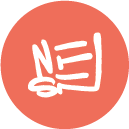banking ● design ● native android + iOS app ● web
Background
Up until the formation of an internal UX team in 2018, the design for Equity banking products was outsourced and left to developers to figure out. Due to the magnitude and footprint the bank has in East Africa serving over 40 million customers, there was a need to improve the user experience improve the legacy processes while still abiding by the regulatory laws and practices.
The business transformation team needed to overhaul the existing app Eazzy Banking and EazzyNet, mobile and web respectively to reflect the new path the bank was taking.
This included the bank's identity, tone of voice and processes.
This included the bank's identity, tone of voice and processes.
Due to the urgency of the project, the timeline was short as this needed to be delivered in
3 weeks. We were a lean team - myself as the designer, one android developer, one iOS developer, and one web developer supported by 2 business analysts, a project manager and business transformation + customer service representatives.
3 weeks. We were a lean team - myself as the designer, one android developer, one iOS developer, and one web developer supported by 2 business analysts, a project manager and business transformation + customer service representatives.
The ask was to provide a smooth onboarding process for the customers in Kenya and thereafter the other subsidiaries(Uganda, Tanzania, Rwanda, South Sudan and DRC).
Process
The first hurdle to overcome was understanding what exactly the business team expected as the requirements document was being prepared in parallel with me creating the user flow journeys.To compensate for the gap, I asked the business team for the basics and clarified questions in order to understand the expectations, limitations and user needs. Not leaving anything to chance, I tried to anticipate questions and dependencies that would arise during the design process.
For example:
i) How many additional steps/screens the user would take before creating their profile?
ii) Would the user need to visit a physical branch after this process?
iii) What validations are needed for the user to proceed through the subsequent journeys?
iv) External regulatory systems that we would need to get feedback from
v) GDPR compliance
Aside from this, it was also super important to take into account what the user was used to in order to deliver the improved overhauled onboarding process.Having gotten the basic requirements, I mapped out the experience and user flow.
For example:
i) How many additional steps/screens the user would take before creating their profile?
ii) Would the user need to visit a physical branch after this process?
iii) What validations are needed for the user to proceed through the subsequent journeys?
iv) External regulatory systems that we would need to get feedback from
v) GDPR compliance
Aside from this, it was also super important to take into account what the user was used to in order to deliver the improved overhauled onboarding process.Having gotten the basic requirements, I mapped out the experience and user flow.
After getting the flow validated by the analyst, business transformation team and related stakeholders, I got down to business and did lo-fi wireframes to show proof of concept.
Above: Simplified user flows in Figma. Below: Snippet lo-fi wireframes on the onboarding & login journey on mobile
After a couple of reiterations and approvals from the stakeholders, I translated the lo-fi wireframes into visually appealing designs that were ready to be coded by the developers. As development neared completion, I did regular design reviews to ensure that the builds for each platform looked as close to the design as possible. The QA and business teams conducted reviews of their own and completed them just in time for the requirements to be collated and approved.
A snippet of the final product on mobile and web apps.
Final thoughts
Despite the short timelines and urgency of this project and also having to juggle other initiatives that were ongoing at the time, this was still an interesting project to work on. Designing in the open made it easy to get input from stakeholders, plus also made it simpler for the developers, analysts and tester alike to reference designs and prototypes to speed up their activities.
The business transformation team as well as the leadership lauded that the final experience was simple and well thought out for the customer needs while also abiding with the set regulatory requirements.
Extras:
Clickable Web app prototype used to validate sign-up and sign-in processes for both returning and new users
Final layouts of the work files handed over to the developers for implementation and deployment

